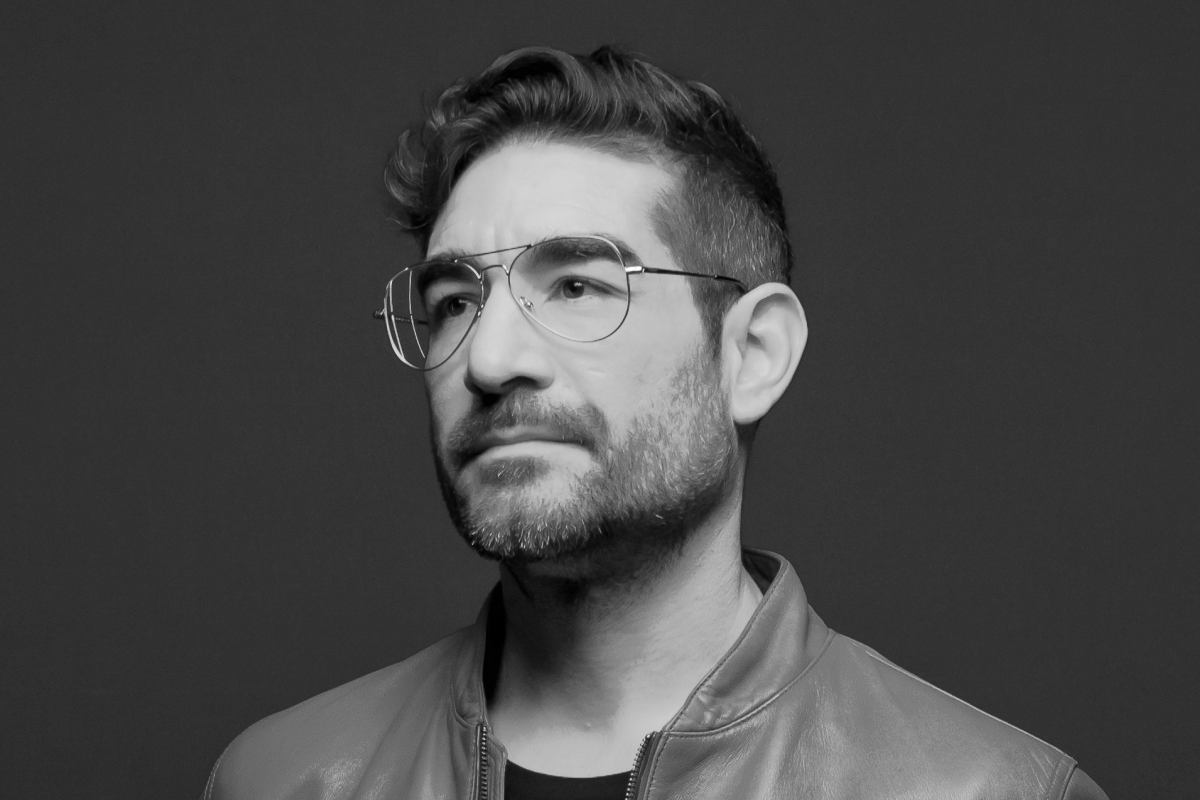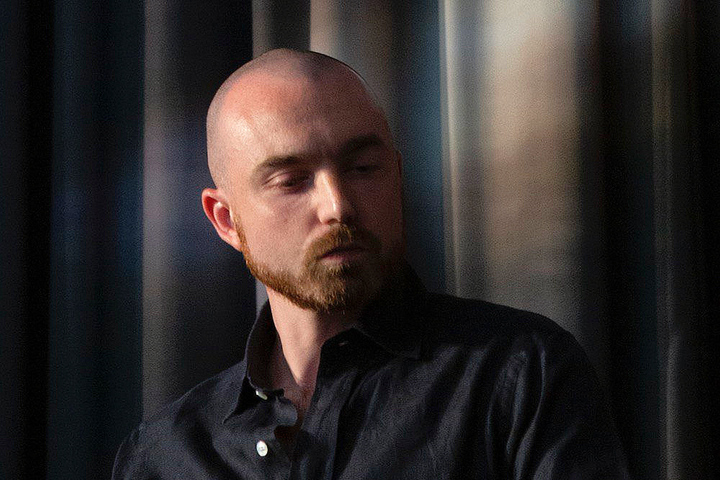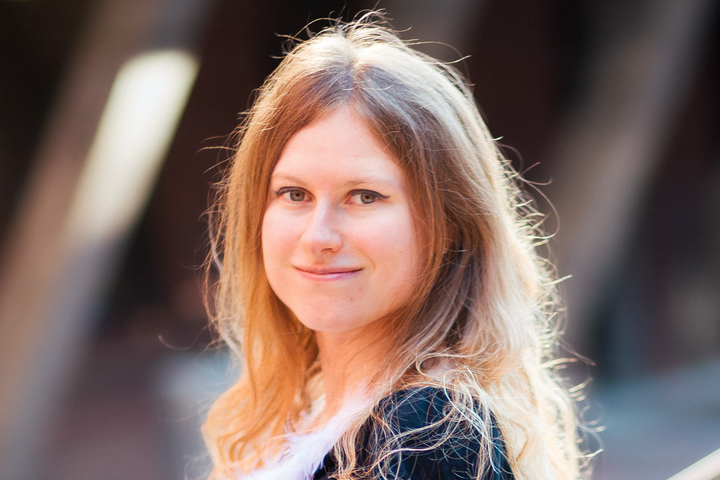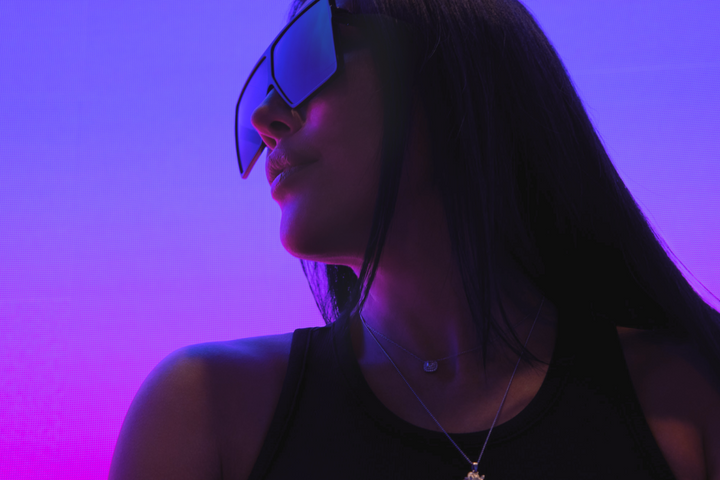Exploring Art Through the Lens of Technology: Interview with Soliman Lopez

Conceptual artist and new media researcher, specializing in science, biotechnology, Web 3.0, interactive and digital art. Founder of Harddiskmuseum, OLEA bio token, and Introns DNA digital entities. Director of Innovation at ESAT (Escuela Superior de Arte y Tecnología). Ideologist of the Terricola Manifesto.
What motivated you to explore the relationship between art and technology in your work?
Since I was a child, I have been deeply drawn to everything related to electronics, computing, and mechanics, driven by a strong curiosity about "how things that work are made." Perhaps this interest stemmed from the fact that the magic of technology can, in some way, be unveiled through a profound understanding of it.
In this process, my interest in the world of art and its social convergence with the boom of social media and telecommunications began. I soon realized that my greatest source of inspiration lay in this realm because my curiosity was and continues to be boundless. I have always considered art to be a tool for understanding a specific moment, whether personal, social, or structural, and that through it, we can represent the aspirations and realities of a globally connected consciousness driven by critical thinking and its expression in what we call art.
Throughout history, in all cultures, from the earliest civilizations we have knowledge of, the relationship between utility and idea has defined the art of the time. In summary, I could say that for me, connecting both concepts, art and technology, is the shortest path to understanding ourselves.
Where do you draw inspiration from when conceptualizing art pieces that involve technology?
I greatly enjoy observing what unfolds in the realm of technological development around me. News about new inventions or technology applications, their uses, and "business" aspects. These proposals gradually shape, much like a grand social sculpture, the behaviors, controls, and challenges of society. This observation, for me, is akin to what the romantics used to do with nature and the landscape, capturing the changes brought forth by light on surfaces through their canvases. However, the data doesn't emanate from a rugged mountain anymore; instead, it is gleaned from a new landscape mediated by technological production. It's this very landscape that directly inspires me, and I strive to apply it to concepts that can reshape current society, invent a new future, empower the empathetic citizen, and challenge short-term thinking. Ultimately, it's like an exercise in conceptual response, almost in real time, to the consequences that these disruptive technologies offer. I imagine their impacts, and future responses, and put them at the service of conceptual art. This is why in my work, you'll find a wide range of concepts, mixed techniques, and juxtaposed technologies.
Could you share some examples of how you've integrated technology into your art projects and the impact it has had?
Throughout my career, I have employed various technologies, ranging from straightforward to highly complex, including biotechnology, as seen in my recent productions like OLEA or the Manifesto Terricola.
At the beginning of my artistic journey, I was particularly intrigued by the significance of digital identities, and I began working on these concepts, using different low-tech mediums to store conceptual art. One example is the Harddiskmuseum, a museum of digital art files stored on a 2TB hard drive. I extended this idea to other mediums, such as Framed Memory Card, where a solid machined aluminum sculpture houses a memory card with hidden content inside.
After this phase, I delved into working with digital data, viewing the body as part of a technological-mediated ecosystem of social reification. Here, I worked with artificial intelligence, as in the High Meshes project, where a micro-community of 125 volunteers was digitally scanned using photogrammetry to create a database where artificial intelligence connects digital bodies based on vertex count and position in the digital world, creating interpersonal relationships no longer tied to traditional social hierarchies based on economies, genders, races, or beliefs.
In Bounding Box, through real-time motion capture, I manifest digital bodies inside wooden cubes that simulate the inner boundaries of a body living in a digital space. I also extensively explored CGI and 3D processes, delving deeply into the concept of digital skin, which was prominently featured in projects like Skinning.
This digital body also occupies a place in physical space, leading me to work with geolocation, as in the Limbology project, where I traced the path of a beacon into the stratosphere and used that data and motion coordinates to create a light sculpture.
As I mentioned earlier, I am currently heavily focused on the application of biotechnology in my work. In OLEA, I created an olive oil containing DNA molecules encoded with the digital token on the Ethereum blockchain. This conceptual exercise led me to create a patent and bridge the world of agriculture (the world's oldest economy) with the new economies linked to the digital realm and blockchain technology.
Finally, in my most recent project, I stored the content of an artistic manifesto (the Manifesto Terricola) in DNA and embedded it in collagen to 3D print a human-sized ear, which I placed in a glacier in Svalbard, the Arctic. Through this process, I created a unique manifesto and highlighted the potential for storing digital information in DNA within glaciers, compelling them to preserve it as a natural ecosystem. These are just a few examples.
How do you see technology enhancing and influencing the creation and perception of art?
Technology will always be a prominent feature in avant-garde artistic productions; it's almost a prerequisite. When I talk about technology, I refer to technical solutions that align with the evolutionary level of a society. In this sense, we are reaching highly advanced levels of technological evolution and complexity in creating images and producing forms and materials, which, in turn, is reshaping the concept of the artist in the digital revolution.
In my opinion, the future of art will have to be conceptual, or it won't be, because technology will be capable of creating many things for us, as is already the case with artificial intelligence. I believe that technology is causing a dematerialization of culture and art in general, a concept I previously explored with the creation of the Harddiskmuseum, accompanied by the Intangible Manifesto, which reflects my views and commitment to works that allude to this plausible and enjoyable immateriality.
In essence, technology will mediate both how we produce and perceive art. Digital devices amplify experiences but also condition and mediate them. In this regard, we must be cautious not to become overly dependent on technology in order to fully appreciate art. That's why my projects allude to the imperceptible or the invisible to our senses, urging us to expand our sensory system for a more panoramic enjoyment of what can be understood as art.
In summary, the future of art will not be understood without its relationship and relativity to technology. Some sectors resist accepting this reality, but we should not forget that technology is already present in almost all aspects of our lives. Understanding it in the right measure, conceptualizing it, and, above all, poeticizing it is the key to not losing sight of true contemporary art.
In your opinion, how has the advent of new technologies transformed the way artists express themselves?
I believe that technology has expanded the boundaries of artistic expression and, in doing so, the mindset of the artist. Art now has broader limits and has incorporated the audience as part of the equation, as the application of technology encourages active viewer participation. In this sense, artists now perhaps think more about this direct relationship with the audience, moving away from being a predominantly introspective or one-way process that defined much of the production in the past.
Another interesting point to highlight here is how immersive technologies such as augmented reality, virtual reality, etc., also serve as a catalyst for unresolved desires. With these technologies, expressive boundaries are not constrained by the coordinates of nature. There are no gravity, temperature, or spatial boundaries, which allows artistic frustrations to be resolved, and we can express concepts or visualize ideas without the need to fully develop them in the material world. I encapsulate these ideas in my concept of "virreality" developed in my next artistic essay with the same name.
Another significant issue pertains not to the production of art itself but to its dissemination and social acceptance. With the advent of WEB3.0 and blockchain communities, art now becomes a nexus that connects members of a group. The artwork now serves as a center and generator of connection, a role that was previously achieved through museums, which were the guarantors of bringing together and uniting individuals interested in art.
What are the most rewarding aspects of combining art and technology in your work?
Using technology in art production comes with certain risks, with perhaps the most prominent being the "wow" effect driven by industry advances and the use of gadgets. To avoid this circumstance, I always strive to begin the artwork from the concept rather than the technique. We mustn't forget that we live in a hyper-connected world, and falling into aesthetic and technical redundancies is increasingly easy and common.
I could say that the most notable aspect of my use of technology is approaching it from a conceptual perspective to ensure that the artwork doesn't quickly become "old-fashioned." Applying technology to a solid foundation of concept makes a lot of sense to me, with this concept layer being established on the symbolic representation of a historical time that conditions me. However, the artwork can withstand the test of time by adapting to new technologies without contradictions, and it also eliminates the risk of preservation. What I mean by this is that my artworks, being conceptual, can be reconstructed with future technologies or using updated software and hardware.
I came across one of your recent projects involving the use of AI. Could you provide some insights into the specifics of how AI is integrated into this project and how it has influenced your creative process?
The first thing I understood about using AI is that we must accept that as artists, we no longer work alone. Some artists use technology or AI in this specific case as a kind of slave at the creator's disposal. In my opinion, to truly harness the potential of technology, we must accept and understand that we are co-creating. I'm not suggesting that we should give technology credit for creation, but we should position it as a partner in crime in our artistic endeavors.
In this direction, I am currently very interested in extracting homogeneous thoughts and the power of meaning and representation from AI. In the end, the AIs we are creating are nothing more than an extension of the common imagination of a large part of humanity. The ability to "play" with this generalized view of art history and other concepts seems truly intriguing to me. In the case of the Terricola Manifesto AI vision, I subjected artificial intelligence to a process of representing the concepts from my artistic manifesto. I did this from a symbolic, schematic perspective, aesthetically circumscribed to the classical world.
The intention is to create, in collaboration with AI, a graphic set of meanings and visual symbols that represent my synthetic thinking about the project. The result is a series of images that attempt to explain as if it were a sacred book, a dogma of thought – in this case, my Terricola Manifesto, which covers four specific content blocks. These concepts, fragmented into 16 text bodies, inspire AI to provide me with a visual interpretation based on the proposed conceptual foundation.
Where this close relationship with AI will take me, I do not yet know, but I believe that AI will change the way we create art, just as it is impacting many other social and personal processes. Therefore, we must already accept it as our elder sibling.
How do you envision the relationship between art and technology evolving in the coming years, and what role do you hope to play in that evolution?
I have always believed that societies evolve and increase or decrease their levels of consciousness in relation to the technology they wield. Technology is the only thing that can truly mediate with our present and future and, of course, the only thing that will be able to save us when chaos arrives, if at that moment we have any chance of being saved.
What I mean is that looking at the natural order of things and how we are evolving, I have a feeling that technology will help a segment of humanity expand its levels of consciousness and enable us to leave this planet when necessary. My concern here is that this segment of the population may not necessarily be the right one, as everything is conditioned by our economic metaphor and doesn't necessarily include the people who "deserve" to be saved.
I advocate for a society elevated in its consciousness and harmony with the environment, a situation in which technology can be of great assistance. I address this topic extensively in the Terricola Manifesto.
What I believe is that the future of art must be conceptual, and in that regard, I continue to work strongly to support this notion. An artistic vision of the future and present of our species, and a use of technology that explains, opens up, and explodes the expressive and ideological possibilities that new technological tools offer us.
For artists interested in exploring the intersection of art and technology, what advice would you offer to help them navigate this creative landscape?
I believe that thinking like an alchemist rather than just an artist can be a good starting point. The idea of condensing different tools, merging them, and making them work together within an artwork guarantees originality and artistic dominance that may be lacking when using certain tools unidirectionally. This can lead to everyone creating essentially the same thing, as if every painting were done with the same brush and oil paint. The final result may vary, but it will always have a similar essence.
To break free from this potentially stagnating possibility in art, experimentation is ideal, and we should move away from the tired concept of "style" that has been so prevalent in the art market. Artists have often aimed to have a recognizable "essence" to capture a market share, but in my opinion, this practice limits full creativity, restricts technique and aesthetics, and pigeonholes the evolutionary power of an idea.
My final recommendation is for deep, continuous, and unrestrained experimentation. In art and technology, what matters most is not the output or the final result (which varies depending on the hardware) but the process and the input, unique to the artist and the driving force of the human or artistic experience, the ultimate purpose of true art.



